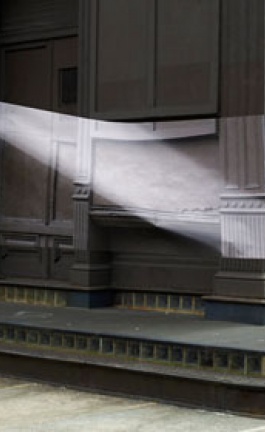The stone is set into the façade. The reference written on the side ensures it goes into the right place. // photo by Alain Hatat Hôtel du Marc during the restoration of its façades. In the background, the cathedral Notre-Dame of Reims // photo by Alain Hatat
Image Courtesy of Veuve Clicquot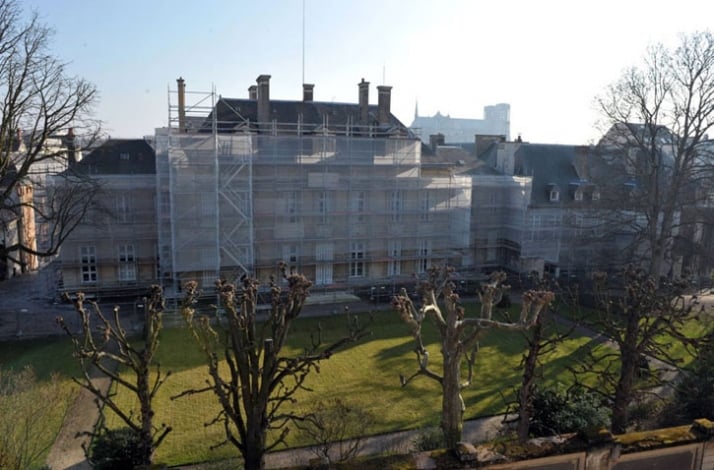
Image Courtesy of Veuve Clicquot
Veuve Clicquot is famous for its unique vision, reined by an eagerness to be a part of a creative universe and even more: a need to create its proper one in collaboration with the most talented people around. Someone could even talk about a kind of yellow power that leads its adventures, opening challenging paths. Innate voyagers never stop and this time their passion led them to restore one of the most beautiful buildings in France. But let’s take it from the beginning.
Hôtel du Marc in Reims // FR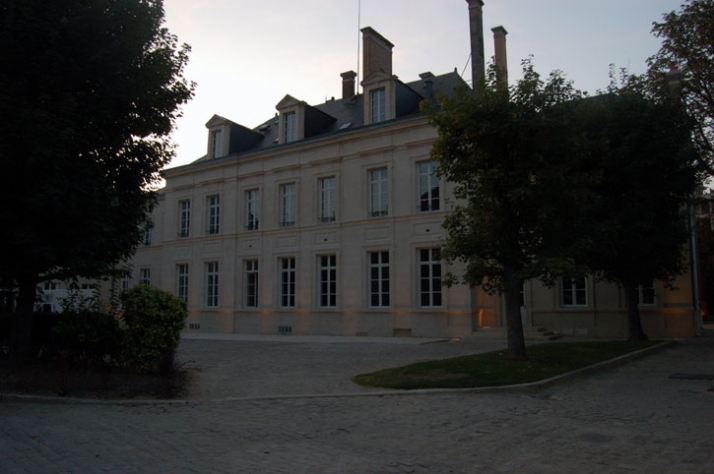
Image Courtesy of Yatzer.com
Hôtel Particulier du Marc, or Marc townhouse, with its courtyard and garden, is an exceptional example of 19th-century architecture in Reims. Built in 1840 for Edouard Werlé (1801-1884), the successor to Madame Clicquot and the Mayor of Reims, it bears all the hallmarks of the influence of the previous century's Neoclassicism. It is now a private venue in which the House Veuve Clicquot Ponsardin welcomes its most privileged guests, who travel from around the world to taste its wines, discover the Champagne region and the French art of living. Faithful Yatzereaders surely know what we are talking about!
It is worth mentioning that Hôtel du Marc is one of the oldest buildings in France whose complete restoration has involved the bringing together of all of the most efficient renewable energy techniques, leading to a 65% reduction in energy consumption and a 90% reduction in greenhouse gas emissions. This is an exceptional example of how the techniques VCP inherited from mediaeval builders can be brought together with the most innovative renewable energy technologies.
“Portrait” by Fredrikson Stallard for Veuve Clicquot in London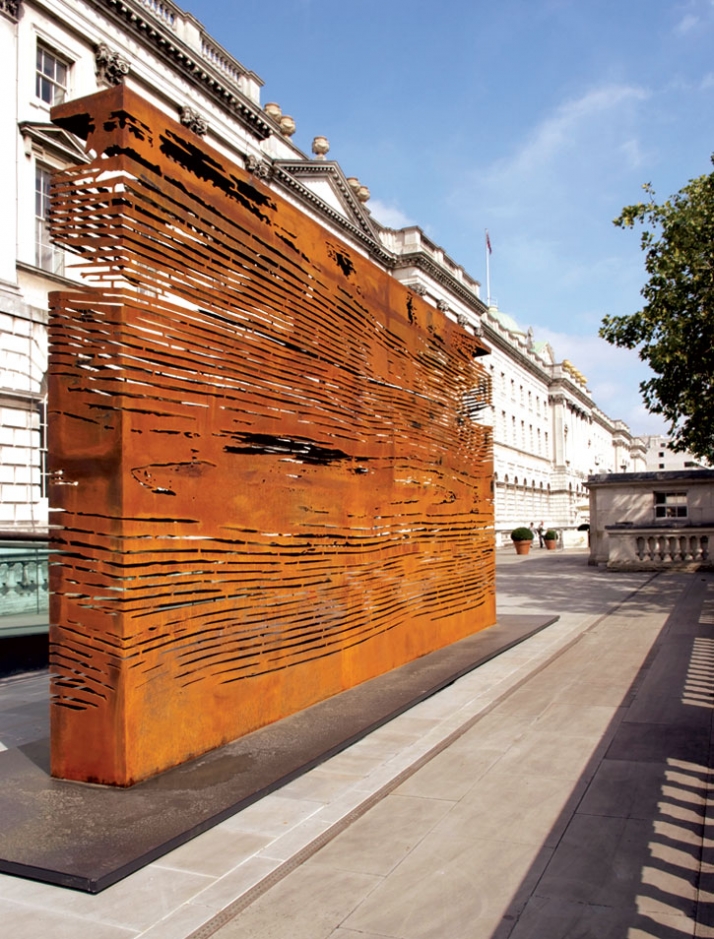
Image Courtesy of Fredrikson Stallard
Art, of course, is essential for a place like Hôtel Particulier du Marc. But not any kind of art… Veuve Clicquot comissioned Fredrikson Stallard, the leading exponents of British Avant-Garde Design, to create a beacon to celebrate the London design Festival. The piece was positioned on the river terrace of Somerset House next to Waterloo Bridge during the festival this September with the idea to be later transferred to Hôtel Particulier du Marc. Fredrikson Stallard accepted the challenge and used as their starting point one of the oldest and best known building blocks of design – wood.
“Portrait” by Fredrikson Stallard for Veuve Clicquot in London The stone is set into the façade. The reference written on the side ensures it goes into the right place. // photo by Alain Hatat “Portrait” by Fredrikson Stallard for Veuve Clicquot in London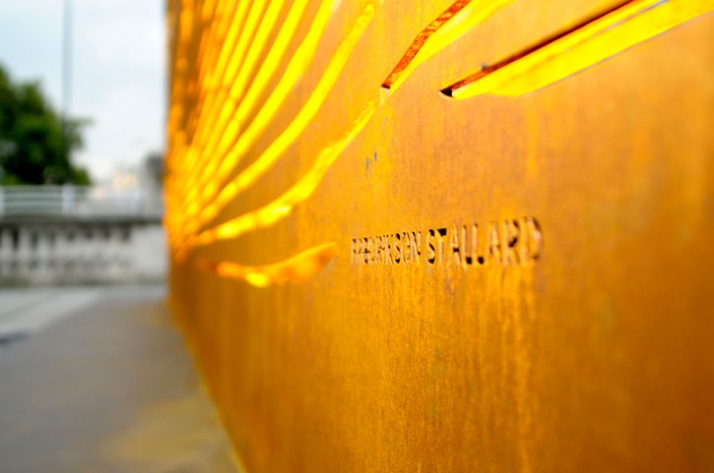
Image Courtesy of Fredrikson Stallard
Image Courtesy of Veuve Clicquot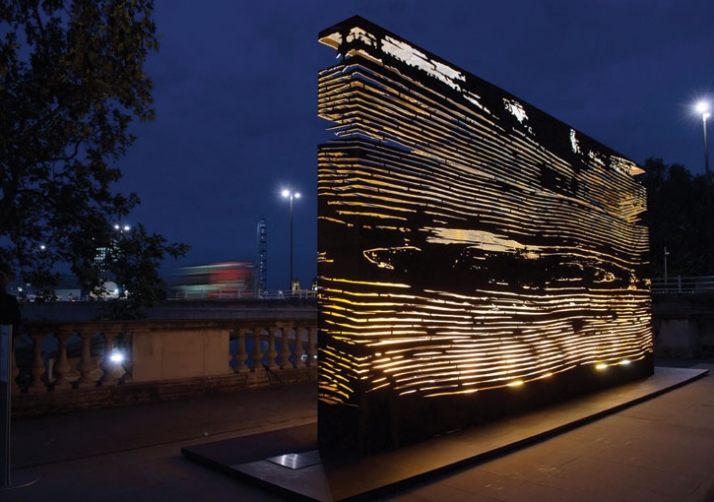
Image Courtesy of Fredrikson Stallard
“Portrait” by Fredrikson Stallard for Veuve Clicquot in London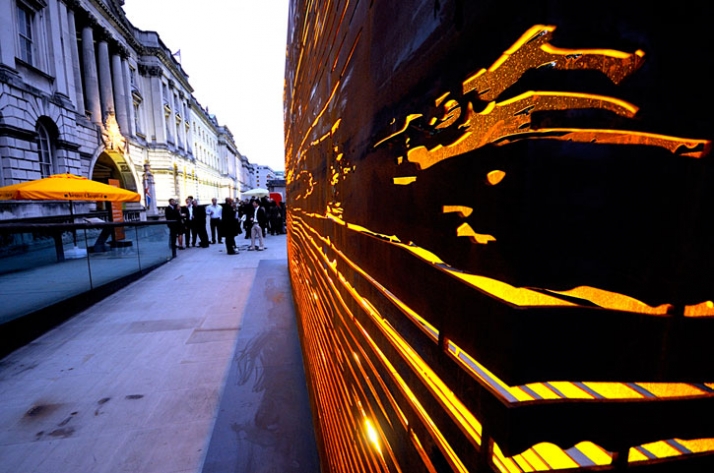
Image Courtesy of Fredrikson Stallard
A single piece of wood was magnified and transformed using a combination of steel and light to recreate the familiar grain structure of wood. In daylight the steel sections, representing the light wood grain laid down by the tree in summer, are the dominant feature. At nightfall the spaces in between, representing the dark wood grain laid down in winter, illuminate in Veuve Clicquot ’s famous yellow, as the steel itself now becomes the negative space.
Image Courtesy of Fredrikson Stallard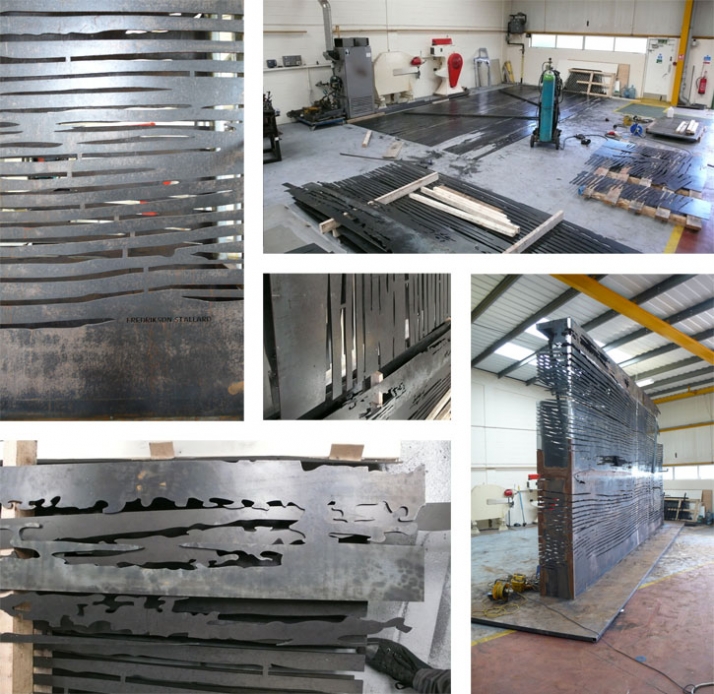
Image Courtesy of Fredrikson Stallard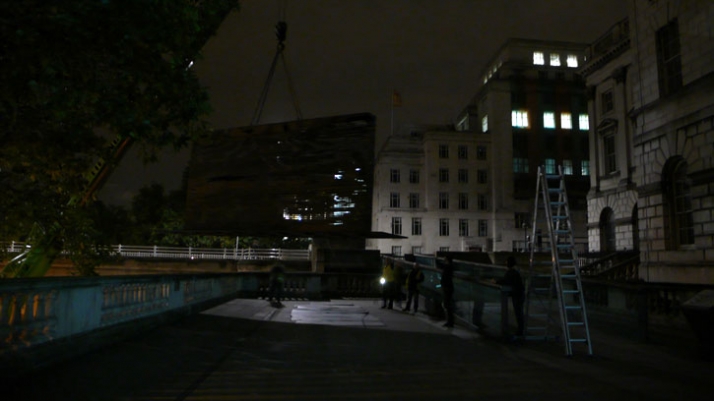
Image Courtesy of Fredrikson Stallard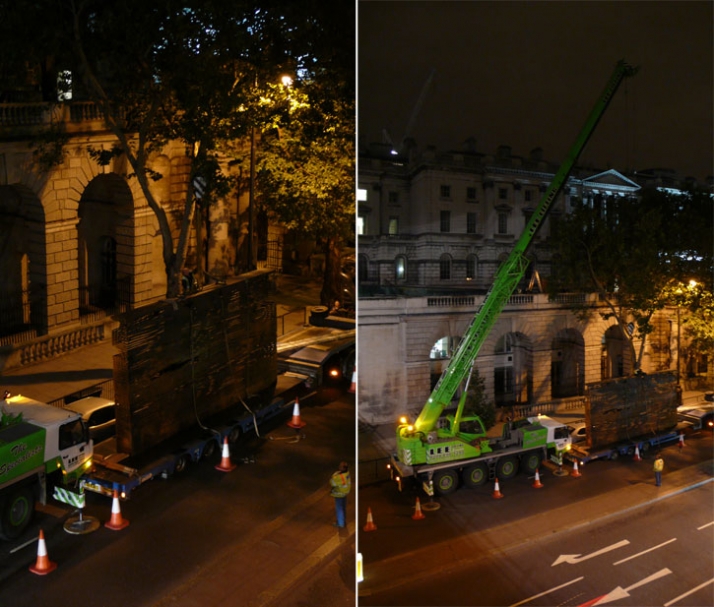
Fredrikson Stallard have become well known for their use of experimental materials and wanted on this occasion to celebrate more traditional materials. By representing wood in steel and light they are continuing to explore materials by cross referencing in this way. Typical of much of Fredrikson Stallard’s work, the piece has a broad contextual foundation and is hard to classify. It could be considered as fine art sculpture, but also in design terms as a lighting piece or screen and architecturally as a wall. Once more Fredrikson Stallard managed to repeat their trademark recipe and to combine simple surface narratives of great graphical clarity with underlying themes of opulent and sensual darkness.
“Portrait” by Fredrikson Stallard for Veuve Clicquot in London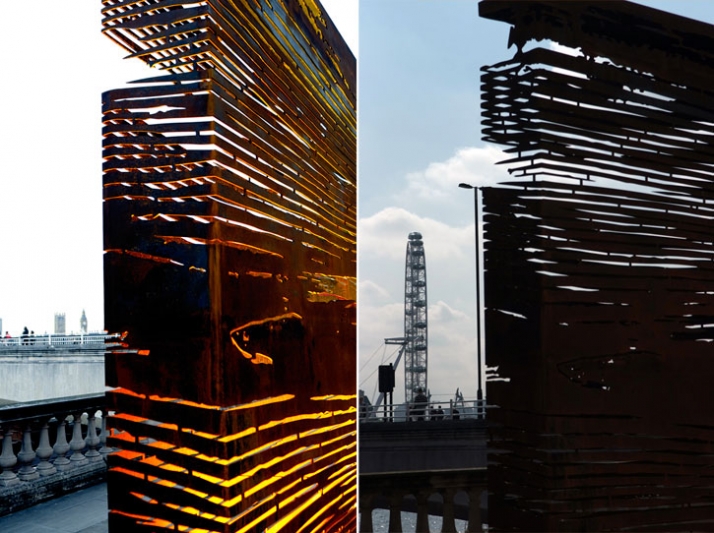
Image Courtesy of Fredrikson Stallard
Their piece may be titled “Portrait” (L 8000 x D 500 x H 4000 // Steel, Light), but one can easily find out that is more close to being a trademark! They point out:
“Being furniture designers, wood is something so obvious as a material one might tend to neglect it in a quest for new materials and related processes. It felt correct to translate this by celebrating a material but without using it. In a sense it the piece becomes an altar for the very fabric of design which we felt appropriate for the Design Festival.”
“Portrait” by Fredrikson Stallard outside Hôtel Particulier du Marc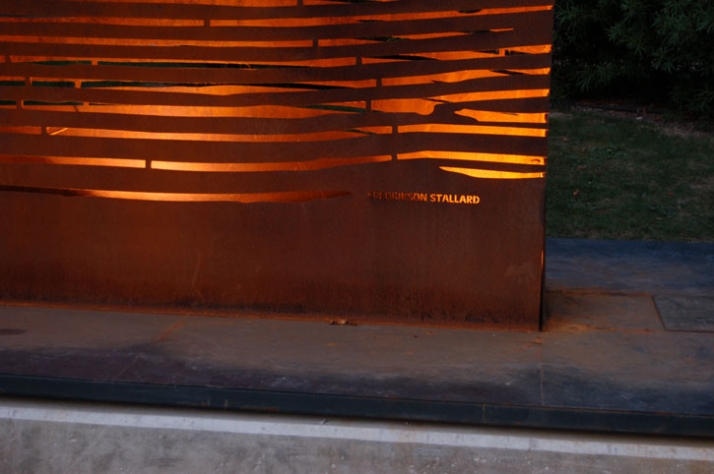
Image Courtesy of Yatzer.com
Yatzer got totally amazed by Hôtel Particulier du Marc and its fine blend of art and architecture, history and innovation, dream and reality. We should add that sources close to Yatzer (well, actually Costas Voyatzis himself) can’t help to repeat that Hôtel Particulier du Marc is totally worth it seeing it live.
Inside the secret cellars of Hôtel Particulier du Marc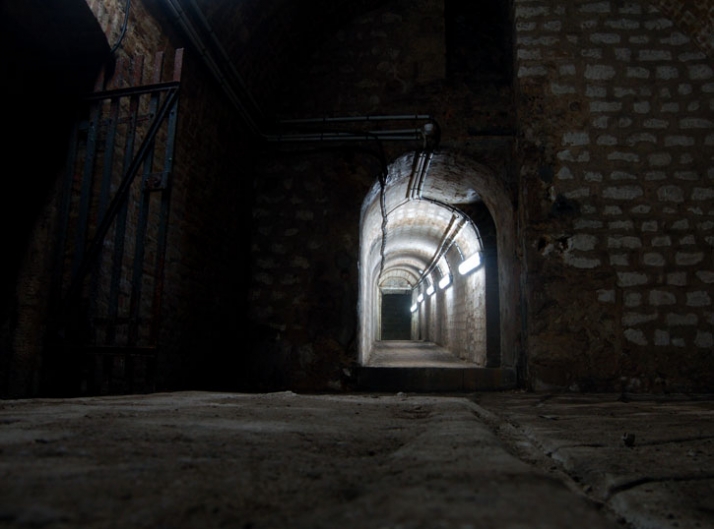
Image Courtesy of Yatzer.com
|
“Nothing happens for no reason! My Reims invitation coincided with European Heritage Days in France (September 19 - 20, 2009) // "Heritage accessible to all" pay homage, on the occasion of the 50th anniversary of the Ministry of Culture and Communication and to its founder André Malraux. // Once we were fully informed even about the slightest detail about the amazing restoration of Hotel du Marc, an exquisite dinner for very few and fortunate followed. However, the peak and the grand reveal of the night was a visit to the secret cellars of Hotel du Marc // This beloved family is always full of surprises!.” Costas Voyatzis // Publisher-Creative Director of Yatzer |
special dinner inside Hôtel Particulier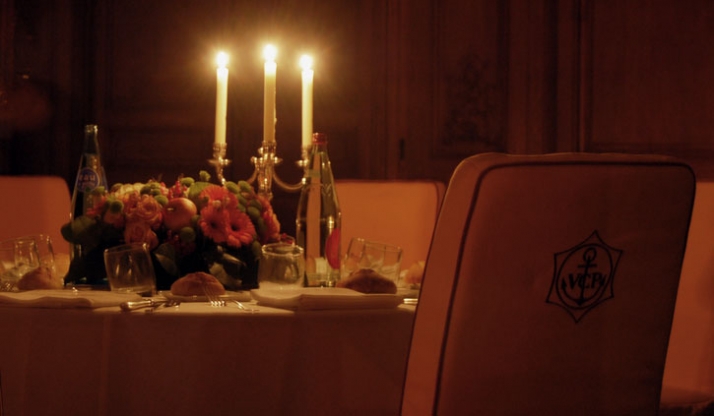
Image Courtesy of Yatzer.com
“Portrait” by Fredrikson Stallard outside Hôtel Particulier du Marc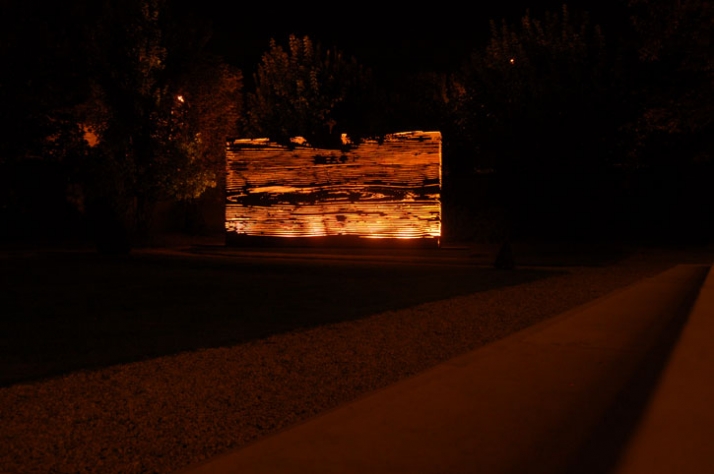
Image Courtesy of Yatzer.com
With the precious assistance of the Veuve Clicquot Family, we found the brains behind Hôtel du Marc's renovation and asked them a few questions to satisfy our curiosity. Enjoy their answers and who knows, maybe one day we may meet you there and have a glass of champagne together! ... to be VCP
/////////////////////////////////////
1. Each block of stone is identified and handed over to the stonecutter who prepares it using the references and measurements from the layout // photo by Alain Hatat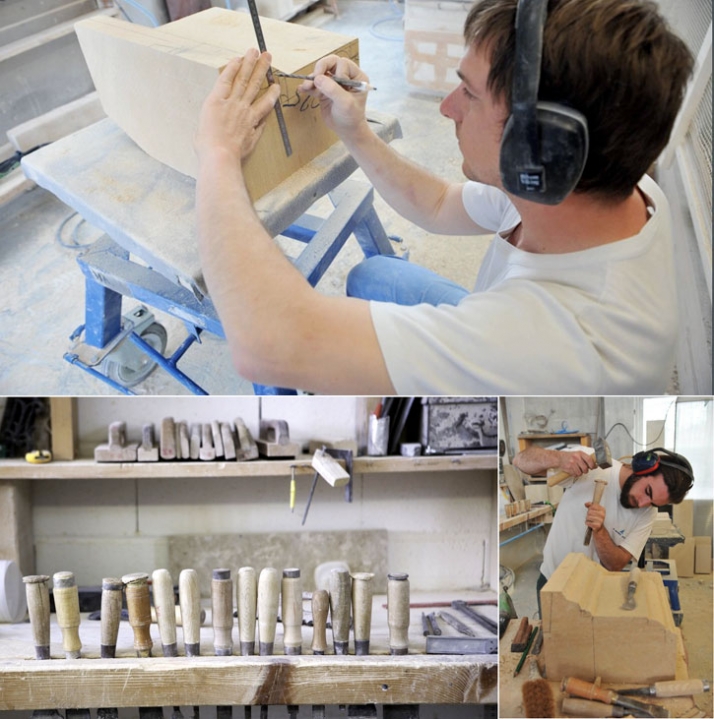
2. Chisels and other tools used by the stonecutter // photo by Régine Mahaux
3. The stonecutter sculpts the outlines of the cornices and then prepares the stone for setting, so that it fits exactly into its place on the façade // photo by Alain Hatat
|
Images Courtesy of Veuve Clicquot |
François Chatillon
Chief Architect for Marne and the Ardennes, Historic Monuments Department // Project manager for the restoration of the Hôtel du Marc’s façades
What was the state of the Hôtel du Marc’s façades?
“Built in 1840-1841, the Hôtel du Marc bore witness to a period of expansion of the city of Reims. During the First World War, Reims was heavily bombarded and suffered many major fires. The Hôtel du Marc escaped the destruction and fire that wiped out the entire district and the Veuve Clicquot Ponsardin headquarters, but its façades were considerably pockmarked by shrapnel. The pockmarks added to the natural wear of the stone, making it increasingly fragile and contributing to water and air erosion. In the long term, this deterioration could have caused more major, irreversible damage.”
What choices did you make for the restoration?
“The distinguishing feature of the Hôtel du Marc’s architecture is the neoclassical style of its elevations, and bays highlighted by projecting elements. The choice of restoration was one of minimal intervention, consisting of restoring the vertical and horizontal lines of the façades. This meant touching up the bases, string courses, frames and entablature. As for the many shrapnel pockmarks, the issue of their conservation had to be addressed. In the end, the decision was made to keep some of them, for History’s sake!”
Why these choices?
“Restoring the vertical and horizontal lines gives the Hôtel du Marc back the imposing majesty of its neoclassical architecture, and will protect its façades from erosion. In the same way as the architecture itself, the First World War pockmarks are a part of the history of a building which remained standing in a city that was 60% destroyed in 1918."
Stonecutter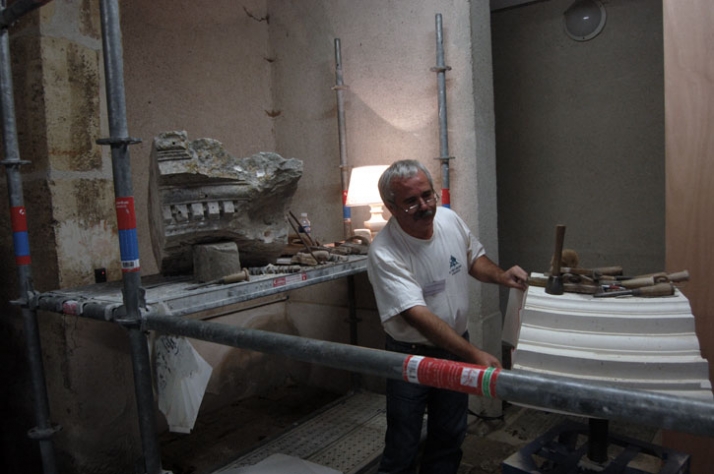
Image Courtesy of Yatzer.com
Didier Labati
Chief architect of the interior renovation of the Hôtel du Marc
“Alongside the complete restoration of the façades, alterations were made to the bays, the perrons were touched up and an ornamental terrace was created on the garden side. In order to become a public-access building, the Hôtel du Marc had to meet a series of requirements and improvements in terms of safety and accessibility, while remaining true to the building’s overall design and history. To make it accessible to People with Reduced Mobility (PRMs), the courtyard was repaved and the entrance was moved. The building was equipped as discreetly as possible with a lift and chairlift. Doorways were reviewed, as a result of which alterations were made to one of the bedrooms.”
The stone is set into the façade. The reference written on the side ensures it goes into the right place. // photo by Alain Hatat The stone is set into the façade. The reference written on the side ensures it goes into the right place. // photo by Alain Hatat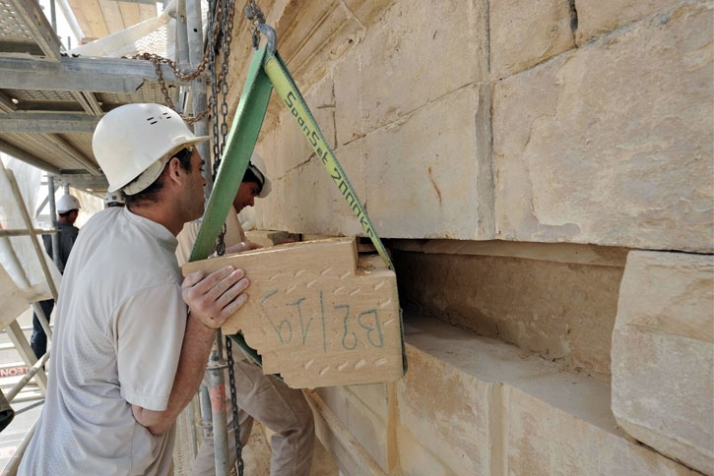
Image Courtesy of Veuve Clicquot
Image Courtesy of Veuve Clicquot
Félix Bocquet
Environmental Quality Manager, Veuve Clicquot Ponsardin
Why opt for renewable energies at the Hôtel du Marc?
“Veuve Clicquot’s commitment to sustainable development is not a case of jumping on the bandwagon. Our grape-growing and wine-production trades have always had a special relationship with time. Long-term vision is a part of our culture, being a champagne House founded in 1772! Our choices concerning grape-growing and wine-production techniques have always taken into account the preservation of our own natural heritage and that of our region. Ours is an overarching commitment that encompasses all of Veuve Clicquot's activities. So it was only natural that, in renovating the Hôtel du Marc, we should seek to reduce its ecological footprint as much as possible. How could we ensure the Hôtel du Marc a sustainable future at a time when awareness of climate change and the increasing scarcity of fossil fuels is at the centre of international concerns? That was the challenge we faced!”
What technical constraints have you encountered to putting renewable energies in place at the Hôtel du Marc?
“It was impossible to cater for all of the energy needs of this huge private house using a single technique. We therefore had to combine the most efficient technologies according to need. These techniques were put in place while preserving the integrity of the structure and materials of a 19th-century building."
What aesthetic constraints were there?
“The Hôtel du Marc was built in the 19th century, and it stands opposite a listed Renaissance building. The aesthetic constraints were therefore twofold: incorporate cutting-edge technology in a historic building, without either altering its design or affecting the visual integrity of the neighbouring listed site.”
Machinery Room of Hôtel Particulier du Marc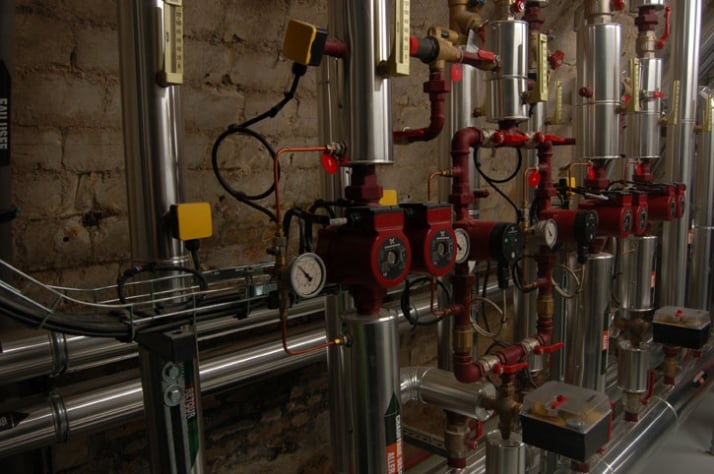
Image Courtesy of Yatzer.com
What techniques were chosen?
“It was clear that the complete insulation of the building, combined with the most efficient renewable energies of the moment, were what was needed in order to cater for the Hôtel du Marc’s energy needs and make it self-sufficient.
“The presence of groundwater close to the site, and its characteristics, straight away led us to the choice of geothermal energy for the heating and air conditioning of the building. Using this technique in conjunction with a dual-flow ventilation system made it possible to optimise geothermal energy performance, as well as offer better air quality through the circulation of fresh air. The system is enhanced by the use of the network of disused cellars beneath the house – Veuve Clicquot's former wine cellars – as an earth tube, providing additional cool air in summer and warm air in winter, with no additional energy consumption. Finally, thermal solar panels, invisible from the site, were combined with this device for the provision of hot water. Ultimately, the Hôtel du Marc will also be fitted with low-consumption electric lighting and will be managed according to Ecolabel principles.”
What are the issues involved in this move over to renewable energies?
“The major issue is to make the building as energy efficient as possible, and as independent of fossil fuels as possible. By combining efficient insulation and renewable energies, Veuve Clicquot has made its reception site a model of energy management that is entirely in step with the goals of the Grenelle Environment Forum (20% reduction in GHGs, 20% reduction in energy consumption, 20% renewable energies by 2020). The second challenge was to incorporate cutting-edge technology in a historic building that borders a listed site, while preserving the latter’s architectural integrity. The Hôtel du Marc will be one of the very first historic buildings in France to be entirely restored with the incorporation of the most efficient renewable-energy techniques.”
More analytically, this large-scale project was carried out in conjunction with:
- François Chatillon, Chief Architect of Historical Monuments
- Le Bâtiment Associé
- Léon Noël
- Cabinet Labati
- INGENI
- Gayet
- Patrick Mazingue Wrought Iron
- the advice of Raphaël Gastebois, kept Chief Architect of Bâtiments de France
The various stages in this exceptional restoration project were photographed by Alain Hatat and Régine Mahaux and filmed by Blue Bird.
Recent Articles

Palazzo Citterio: A New Chapter in Milan’s Cultural Landscape






